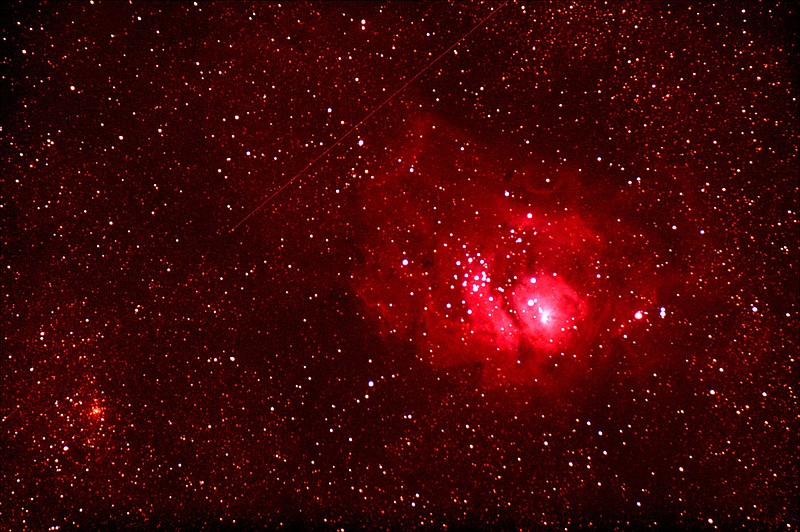The Milky Way is coming! This month, we will say goodbye to the galaxies near Leo the Lion because, as the earth moves along its orbit, the earth faces in the direction of the Milky Way. There are still lots of galaxies to be seen, but they are a challenge to find and it will take a big 'scope, 10 inches or bigger, to see them well.
Our galaxy is a so-called barred spiral; look up barred spirals and you will see good examples and good illustrations.
In the spiral arms of our galaxy, there is still star formation -- new stars just starting their fusion cycle and moving toward maturity. One definite sign of this is that there are very many ambient clouds of hydrogen, collapsing over time to form new stars.
In this article, I have included a good example, lying along a line of sight toward the center of our galaxy. This example is the Lagoon Nebula, a rich star-forming region about 4,000 to 6,000 lightyears away. Such areas of hydrogen fluoresce in a characteristic red or magenta color because the forming stars, young and hot, give off ultraviolet radiation very strongly and this causes the characteristic glow. It is the same mechanism as occurs when one shines a black light, which is really an ultraviolet light our eyes can't see, in a cave with certain minerals. These minerals are stimulated. They glow.
In the image I have provided, some stars have already formed; some stars have yet to form, but they will, over long periods of time. Spiral galaxies are active things -- they change over very long spans of time, mostly by making new stars.
Our Milky Way galaxy has very many of these star-forming regions. In elliptical galaxies, another form of galaxy entirely different from spiral galaxies, the star-forming clouds of hydrogen have all been turned into stars and we do not see the red, glowing areas where there is ambient hydrogen. Lots of good images of elliptical galaxies are available on the internet.
Summer is the time of the Milky Way. It is also a good time to learn two constellations if you don't already know them. A really large constellation is Scorpio the scorpion. You could look this up on a star map on the internet and, after you have seen an illustration, try to make it out on the southern horizon. It really does form the shape of a very large scorpion, complete with stars that form its claws and a stinger tail! It also has a very bright and very large red giant star, Antares, to mark the center of the scorpion.
A bit more difficult is the constellation Sagittarius. You can look this one up too, but it will be easier to find in the sky if you look for a teapot instead of the mythological character. Even so, this constellation does not contain any really bright stars and is often just on the edge of the southern horizon from our vantage in Arkansas.
Summer often brings very good weather to look at the Milky Way and this is best done under the darkest sky you can find. Use binoculars to cruise along its edge -- it is very beautiful!
David Cater is a former faculty member of JBU. Email him at [email protected]. Opinions expressed are those of the author.

